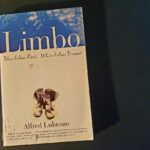[This post is part of a series – click here for the first blog]
Mark and Christina’s presentation on Bourdieu in ECER was tokenly about the methodological implications of habitus, although their talk ended up being about far more than mere methods. Indeed, I felt that Mark and Christina confronted some of the central issues within Bourdieuian sociology (not least whether we say ‘Bourdieuian’ or ‘Bourdieusian’).
Mark noted that Diane Reay’s call to arms (https://www.academia.edu/3179418/_Its_all_becoming_a_habitus_beyond_the_habitual_use_of_habitus_in_educational_research) has not, as yet, prompted much of a response within the academy. Reay argued that the concept of habitus needs to be expanded and improved through constant engagement with real life. Indeed, this is precisely what Bourdieu wanted to happen. The dialectic progresses when we apply the theoretical and abstract to the concrete: instead of pointing out the ‘weaknesses’ within Bourdieu’s work, we should simply see any ‘blindspots’ as opportunities to expand and develop his work, rather than to disregard it.
I believe that studying places and communities are central to demonstrating the limitations of habitus to improving it as a concept.
I discovered Bourdieu about a year into my PhD (my background is in political theory and international relations, not sociology), which was a study of Welsh identity within a small seaside town in South Wales. I found his work to be a goldmine: his eclectic methodology resonated perfectly with my own attempts to get under the skin of a community; the concept of distinction explained to me perfectly how class is understood through aesthetic consumption practices in everyday life; and the concept of habitus seemed to explain perfectly why some groups of people behaved in particular ways.
But as I progressed into my community study, the concept of habitus, which had initially seemed so helpful, began to feel limiting and problematic. The concept ultimately seemed to clash with the lived experiences of the people I observed and spoke to. Whilst habitus is an incredibly useful heuristic tool on a general, theoretical level, I found it problematic when applied to everyday life. I believe it is particularly unequipped to deal with the complexity of particular places and communities.
A question of method
Much of this is down to method and the places and people we study. As Wacquant notes (2002), sociology- and urban ethnography in particular- is often guilty of fetishizing the working class. Through our determination to study ‘the working class’ we naturally select ‘straightforwardly’ ‘working class respondents’, working class areas, estates and so on. Straightforward ‘single’ class identities are only ‘the norm’ if we as sociologists solely focus on working class estates, working class ‘lads’, working class students, and so on.
Some areas and regions (such as the South Wales Valleys) have little migration of people either in or out. In such areas, solid class cultures (and habituses) can emerge, based around local cultural apparatuses related to either industry, sport and so on. In these places- which, it has to be noted, are over-studied and indeed fetishized- it is relatively easy to discern a distinct or ‘uniform’ type of working class habitus, or a distinct, locally hegemonic type of masculinity.
Diane Reay’s ‘Shaun’s Story’ focuses on the experiences of a working class boy struggling to switch fields, to balance his working class masculine habitus with the different behaviours required in the school and home. The only area I disagree with the article is Reay’s contention that Shaun’s story is rare. On the contrary, I believe stories like Shaun’s are only unusual because of the the limited focus that sociologists engage in, which neglect the complex composition of families, of place, preferring instead to study the homogenous, the marginalised.
But these homogeneous areas are anomalous. Most towns and communities and indeed regions- such as the South Wales coastal plain- are confluences, sites that people are continually moving in and out of. It is at these confluence points where social and geographic mobility– phenomena which necessarily involve habitus transformation and hybridity, are prominent and indeed normal. In these small towns and communities people of different class backgrounds work and live side by side.
Porthcawl, my own area of study, is paradigmatic of the complexity of place. Originally a port for the movement of coal to the South Wales valleys, the town evolved into a thriving tourist resort which serviced both the working class communities in the south wales valleys (who mainly congregated on the beaches and funfair to the East of the town); and also appealed to tourists of a ‘higher social register’ from England, who visited for the golf and natural beauty. As industry flourished in nearby Port Talbot and around the M4 Corridor, the town grew and attracted significant flows of people as a new class fraction-the white collar working class, with their highly complex and often contradictory features-emerged within South Wales (Adamson, 1990) and migrated in numbers from the Valleys to the coastal strip, supplementing the long standing flow of elderly valleys folk who retire to Porthcawl. In addition to this movement from the interior, Porthcawl received (and continues to receive) significant numbers of ‘spiralists’ (i.e. upwardly mobile managerial types) from England.
It is ultimately a town with a ‘split personality’: a complex mix of a traditional working class seaside resort and an extremely affluent dormitory town.
Studying habitus in a mixed community
So what does all this mean for studying habitus?
In Porthcawl there is very little uniformity of family life and background. Instead, within the same town there is a coming together of multiple and varied ‘milieus of origin’: the local, established middle classes rub shoulders with inward, mobile middle classes, each with different class practices and norms, who mingled with the locally established traditional working class people, who mingled with the inward flows of new class fractions.
This all makes the study of habitus within the town extremely complex, because there are multiple milieus and ‘layers’ at play in people’s lives, all played out on the same stage (i.e., the community) or ‘milieu of arrival’ (http://newdiversities.mmg.mpg.de/wp-content/uploads/2014/11/2014_16-01_07_SchneiderLang.pdf) – which of course also exerts its own distinct influence on people (for places themselves have particular class identities) and constitutes yet another important ‘layer’ in habitus production.
During my research I spent significant amounts of time with young people in the town, who exemplified the problems of the working class/middle class binary which often characterises Bourdieuan work. These young people would have ‘traditionally working class’ parents, grandparents and relatives who they have frequent contact with, sharing a class with very middle class peers; equally these middle class local students, with affluent parents from England (one layer) constantly encountering, through sports teams or school, working class peers and friends with different accents and behaviours. Both working and middle class students were in a very good school (which itself had a particular institutional habitus which added yet another layer onto their sense of self); on top of this, they internalised classed local norms from their town itself, learning another class based identity which defined itself against the working class valleys to the North and the working class tourists who frequented the town.
These young people would often change their accent and way of being when amongst family from the working class valleys, for example. But they would also do this when switching between friendship groups within the same class.
Thus the multiple layers or life experiences and influences which produce habitus and ways of being over the course of someone’s life, are numerous and extremely diverse, particularly in these confluences. The sheer complexity of the community I was studying meant that the idea of discrete and clearly defined ‘working class’ and ‘middle class’ habituses was not generally appropriate: there were so many class fractions and contradictory dispositions at play (within the same individuals!) it became impossible to pin people down as having ‘solid’ habituses. Within these places people do not possess ‘one’ way of being or behaving but many. As Gramsci puts it, people are ‘bizarrely composite’- we do not contain one way of being but many, particularly those of us who are influenced by multiple milieus.
The notion of habitus is therefore limited when it is constrained by the dominant notions of ‘working class habitus’ versus ‘middle class habitus’, and when it ignores the issues of social and geographical mobility and the complexity of class fractions. Some brilliant work within the British academy has begun to look at habitus transformation and how people adapt when moving between fields (http://www.socresonline.org.uk/18/4/21.html). Yet even this progressive work generally focuses on people from working class milieus and examines how they react in obviously middle class milieus. But what about mixed class milieus? In these places, habitus transformation (the chameleon habitus) is not situational and rare- i.e. people spending half their time in one field and half in another- but continuous, where children continually absorb influences from working class peers and middle class parents and vice versa. Where instead of moving between different fields, it is the field itself which is mixed.
So the habitus itself is not just working class or middle class, just as places themselves are rarely solidly either/or. The ‘separate worlds’ of the milieu of origin and milieu of arrival are rarely so far apart as we imagine. As a consequence children and adults are exposed to powerful influences from different classes. Of course this then raises the question of which elements in our life are most influential in producing our habitus?










